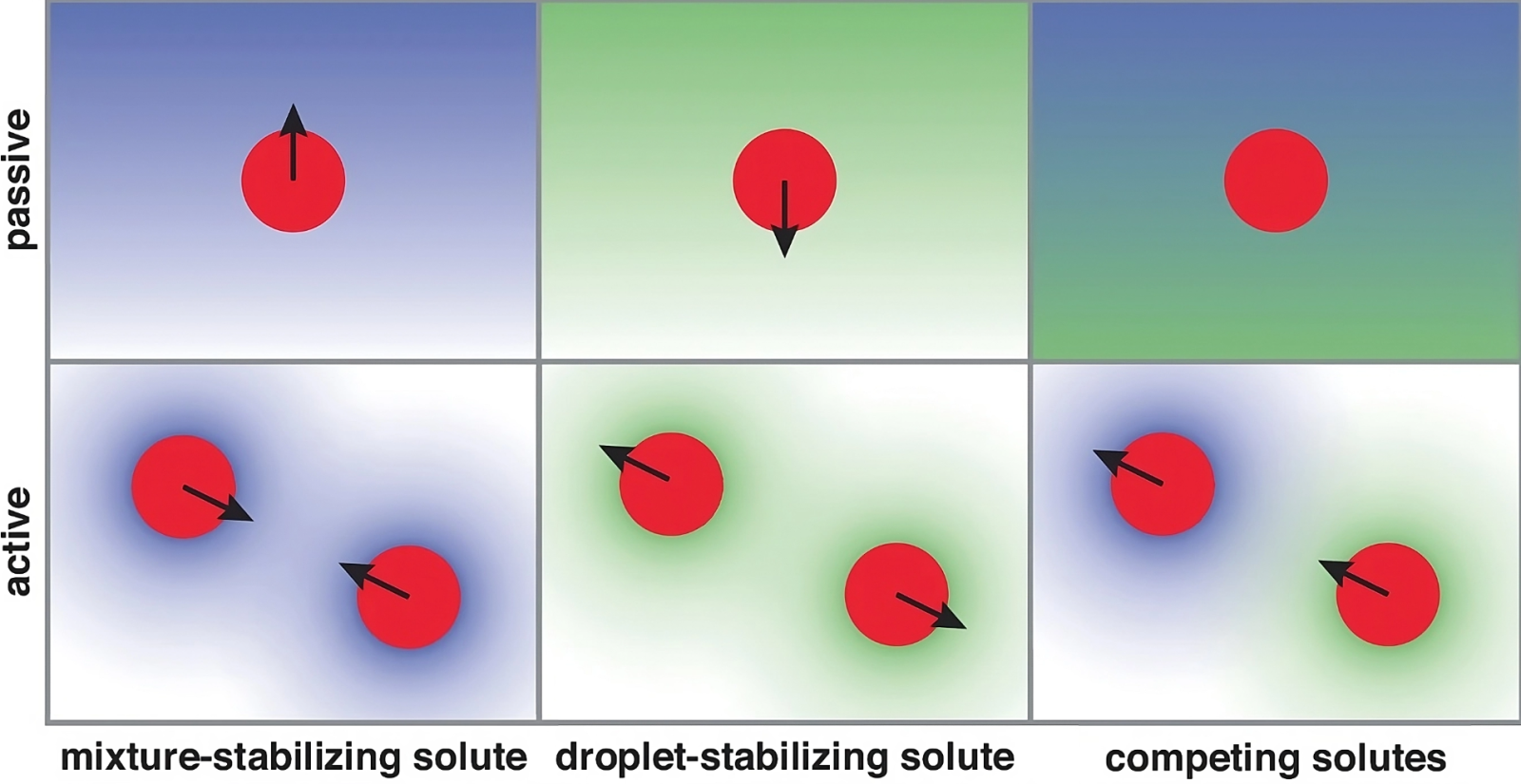Follow us on Google News (click on ☆)
An international collaboration has revealed the existence of an unexpected phenomenon called dialytaxis in artificial organelles without membranes. According to this research published in Nature Communications, this effect could play a role in organizing cellular compartments and be exploited in bioengineering.

(top) Passive droplets are attracted to mixture-stabilizing solutes and repelled by droplet-stabilizing solutes. Opposing gradients can lead to no net movement.
(bottom) Droplets producing mixture-stabilizing (resp. droplet-stabilizing) solutes swim towards (resp. away from) each other. Droplets producing competing solutes can chase each other.
Inside cells, there are well-defined compartments that regulate biochemical activity. Some, like the nucleus, have a membrane, while others are only delimited by a liquid-liquid interface that remains despite the many surrounding chemical reactions.
If the properties of a liquid interface vary along its length, such as by locally adding a surfactant product like soap, spontaneous flows appear and move the material. This is known as the Marangoni effect. It can be observed in examples such as the tears of wine, the liquid bulges that form above the wine when you swirl your glass. In this case, alcohol, whose quantity varies along the interface, plays the role of the soap.
However, the vast majority of membrane-less compartments in cells do not synthesize soap or alcohol, so the Marangoni effect is not expected to occur there. Researchers from the Laboratory of Hydrodynamics (LadHyX, CNRS/École Polytechnique), the Swiss Federal Institute of Technology Zurich (ETHZ, Switzerland), and Cornell University (United States) have discovered that the Marangoni effect could indeed occur there according to a more generic principle than expected.
The team was studying chemical reactions inside an artificial system of protein droplets loaded with enzymes, which mimic the membrane-less compartments of cells. The scientists observed the degradation reaction of urea into ammonia and carbon dioxide when they saw the protein droplets begin to swim and attract each other. A behavior that corresponds to the Marangoni effect. The molecules produced by urea degradation, although very different from soap or alcohol, disrupt the stability of the liquid-liquid interface between the droplet and the solution.
By testing different molecules, the researchers realized that the protein droplets collectively move towards areas concentrated with molecules that dissolve them. This phenomenon, named dialytaxis by the co-authors, could contribute to the transport of membrane-less compartments within cells.
This principle could eventually be used in designing "droplet robots" capable of sensing chemical composition variations in their environment, moving accordingly, and then transforming into chemical microreactors at the desired location.
References:
Phase-separated droplets swim to their dissolution.
Etienne Jambon-Puillet, Andrea Testa, Charlotta Lorenz, Robert W. Style, Aleksander A. Rebane & Eric R. Dufresne.
Nature Communications volume 15, article number: 3919 (2024).
https://doi.org/10.1038/s41467-024-47889-y
Article available on the open archive database HAL